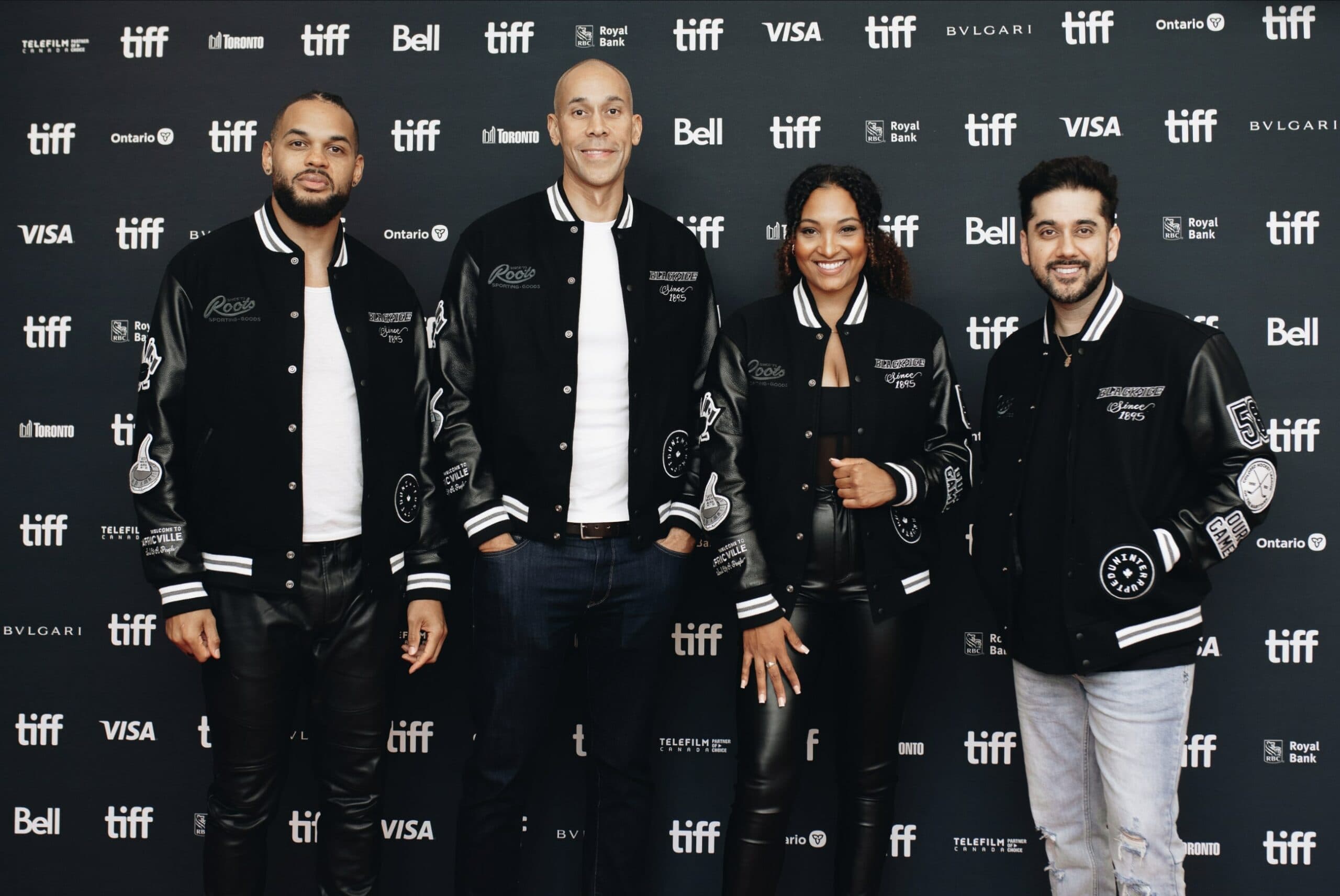
Black Ice, a new documentary focusing on the history of anti-Black racism in hockey’s major and minor leagues, debuted to acclaim at Toronto International Film Festival in early September.
The feature-length film, helmed by an Oscar-nominated filmmaker and featuring high-profile individuals both behind and in front of the camera, captured the People’s Choice Award for Documentaries at TIFF.
Directed by Hubert Davis and backed by a vast array of executive producers (including LeBron James and Drake), Black Ice has yet to be widely released in theatres but has played at film festivals across Canada since its successful debut in Toronto.
Davis is no stranger to true stories centered around Black individuals in sports. His 2005 short, Hardwood, explores the complexities of his relationship with his father, former Harlem Globetrotter Mel Davis.
The younger Davis’ newest film has a broader scope — reflected in its 97-minute runtime — although the stories contained therein are just as personal.
Black Ice brings together Saroya Tinker, Akim Aliu, Sarah Nurse, Wayne Simmonds, Mark Connors, Willie O’Ree, Blake Bolden, Anthony Duclair, and more individuals from different levels, locations, and eras of hockey to share their experiences dealing with bigotry in the sport.
“They all resonated in different ways,” Davis told Daily Faceoff. “I related very much to when Saroya talked about the experience of being made to feel different.
“Like, this realization when you’re younger that, ‘Oh, people look at me differently than they look at themselves.’ When she said that line, I thought, ‘Oh, I understand that,'” Davis added. “I remember having that experience around the same age.”
Tinker, a 24-year-old defender entering her second season with the Premier Hockey Federation’s Toronto Six, features prominently from start to finish in the film.
The Oshawa product has traveled across Canada to attend screenings of Black Ice and is a two-time recipient of the PHF’s Foundation Awards, which recognize individuals “who actively apply the core values of hockey to their community and help grow and improve hockey culture.”
“I remember when they first announced that Drake and LeBron were going to co-produce the Black Ice movie,” Tinker said. “I was like, ‘Wow, I wonder if they’re going to include women’s opinions.’ So, I actually reached out and wanted to be involved and wanted to tell my story.
“I DM’ed everybody I could find who was involved and, eventually, it came back to me and we were able to start working on the project. They valued my opinion and wanted me involved.”
Tinker appears in a segment of the film alongside her father, Harvel, who described his “process” of grounding himself — in his words, making himself comfortable — at hockey rinks and other related spaces by seeking out any fellow Black faces, including in team photos hanging on the walls.
“My dad’s the reason I play hockey,” Tinker said. “Just knowing how he felt out of place — he played hockey growing up and he kind of got pushed out of the sport, never really played at a high level, just because of all the racism that he faced growing up in Scarborough.
“In that sense, I wanted him to be involved. I wanted him to be able to tell his story of how he’s experienced hockey through myself and my brothers and himself.”
As Davis alluded to, Tinker shared her experience of having racist slurs directed at her in a locker room when she was 12 (a common refrain from many in the film), which opened her eyes to how her teammates perceived her in a very different light.
Also in the film, Tinker mentioned how she still “played angry” until she finally had the opportunity last season to join a team with another Black player and a Black coach — both still very much a rarity in the hockey world.
Similarly, relatively few Black players are in the Hockey Hall of Fame, with former Quebec Aces standout Herb Carnegie only being inducted 68 years after the end of his playing career (and 10 years after his death in 2012 at age 92).
Players in the Coloured Hockey League of the early 20th century were among the early pioneers of now-essential hockey features, such as butterfly goaltending and the slapshot, but they’ve been given a fraction of the credit for these innovations compared to the magnitude of influence they had on the sport.
“The Black experience in Canada is actually integral to the Canadian experience,” Davis said. “Like, you actually can’t talk about Canada without talking about the Black experience, as that’s so much of what ‘being Canadian’ is actually based on.”
It’s that relationship between culture, identity, and sport that helped draw Davis to the project.
“I thought it was a really interesting opportunity to look at the importance, culturally, of hockey in this country,” Davis said. “People who I’ve worked with who have just moved to Canada, they also put their kids in hockey and follow hockey so religiously because I think we have an understanding that it’s kind of a currency in Canada — those conversations, and that pride, and that experience.
“So I thought that was a really interesting way to delve into some other systemic stuff, I felt, through hockey, because hockey is Canada, and vice versa. It was like, ‘OK, if we’re really going to talk about it and look at it in an honest way, what else can we uncover through that experience?'”


